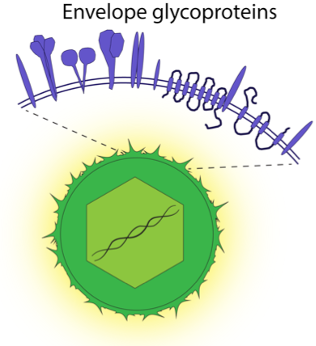Herpesviridae
Herpesviruses are a large family of DNA viruses infecting a wide range of hosts from invertebrates to mammals and quite widely prevalent in the human population. Herpesviruses possess large genomes encoding more than 70 proteins. In contrast to most enveloped viruses, expressing one or two surface proteins, herpesviruses present at least 10 distinct viral proteins on the surface, playing diverse well-regulated functions, and often exhibit broad tissue tropism. The conserved viral entry machinery consists of gB, gH, and gL envelope proteins, which are indispensable for viral propagation, whereas a variable set of proteins determine cellular tropism. Herpesviruses can be subcategorized into 3 subfamilies – alphaherpesviruses, betaherpesviruses, and gammaherpesviruses. Eight herpesviruses infect humans, with alphaherpesviruses HSV-1, HSV-2, and VZV causing cutaneous lesions. Betaherpesviruses HCMV, HHV-6, and HHV-7 infect immune cells and some are the causative agents of common childhood infections. Gammaherpesviruses EBV and KSHV also infect immune cells and have the potential for malignant transformation. Lytic cycles of herpesviruses are characteristic of viral genome replication and often cause symptoms in patients, but can also be subclinical. All herpesviruses establish latency in neurons (alphaherpesviruses) or immune cells and can reactivate in response to stress or other stimuli.

